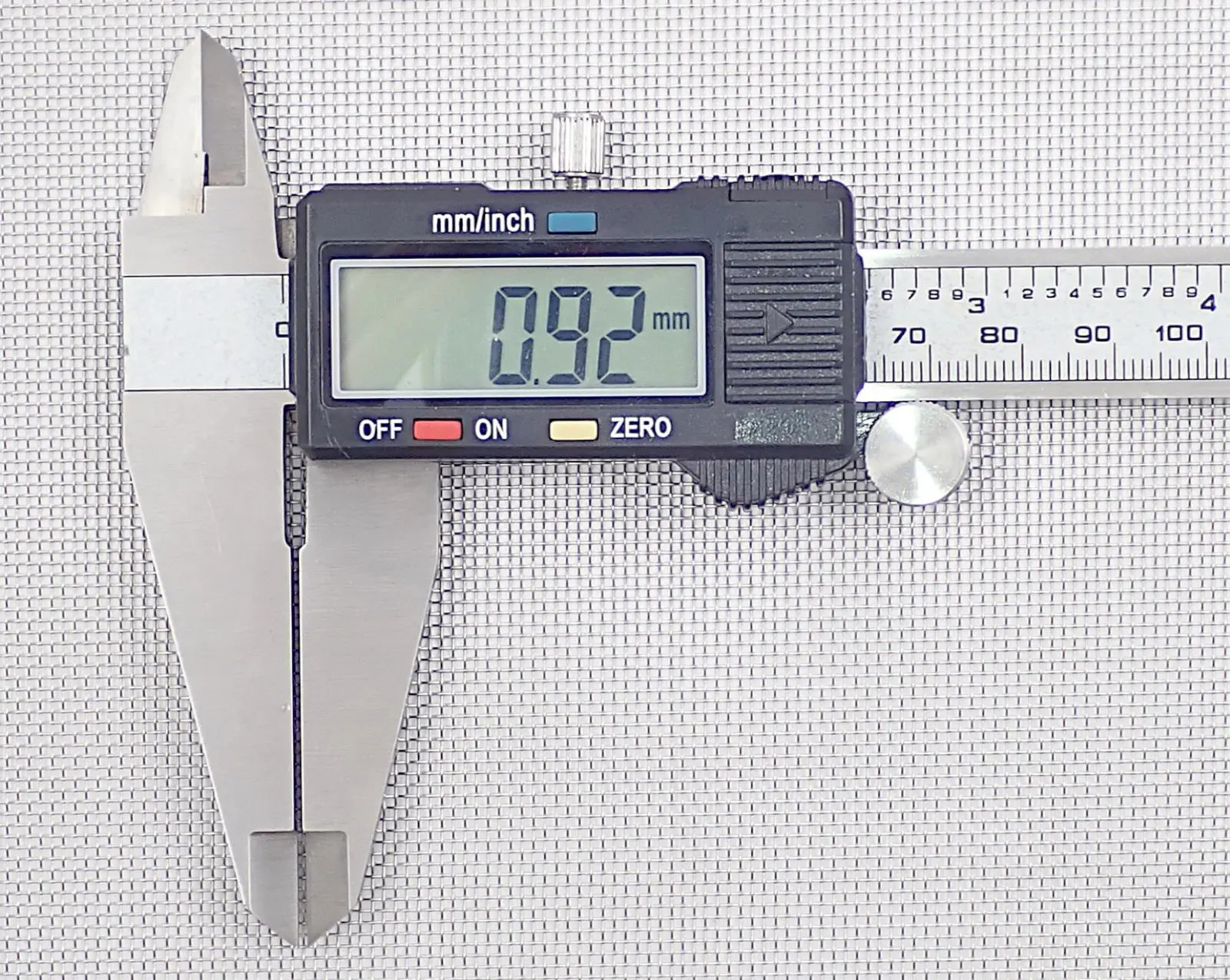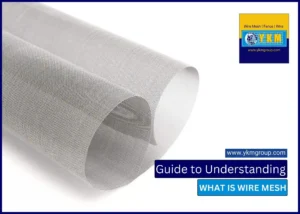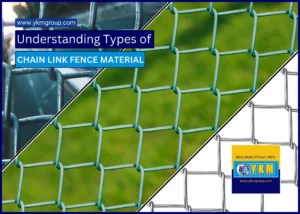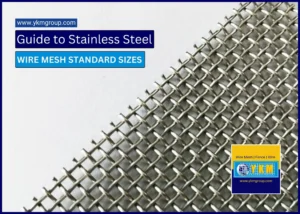Wire mesh is a versatile material with various wire mesh sizes used across industries including construction, agriculture, manufacturing and many more. Understanding wire mesh size is crucial for selecting the right mesh for your specific needs. So, let’s break it down step by step.
What is Wire Mesh?
Wire mesh, also known as wire cloth, is a material composed of interlocked metal wires. These wires are arranged in a grid pattern, creating a mesh structure. The wire mesh size and configuration of the mesh determine its suitability for various applications.
Wire Gauge Size & Weight Measurement

Wire mesh size calculation

Wire mesh sizes are often specified in terms of wire gauge. The wire gauge indicates the diameter of the wire used in the mesh. A lower gauge number represents a thicker wire, while a higher gauge number signifies a thinner wire. Common wire gauges used in wire mesh include 6, 8, 10, and 12.
Mesh Count and Aperture
Mesh count refers to the number of openings or apertures in a linear inch of wire mesh. A higher mesh count indicates a finer mesh with smaller openings, while a lower mesh count implies a coarser mesh with larger openings. Understanding mesh count is crucial for applications requiring precise filtration or sizing.
To measure mesh count, you need to count the number of openings (apertures) in one linear inch of the wire mesh. Here’s the formula:
- Mesh Count (MC) = Number of openings in one linear inch
Types of Wire Mesh
Woven Wire Mesh
Woven wire cloth is manufactured by weaving individual wires together in an over-and-under pattern. It is available in various weave styles, such as plain weave, twill weave, and Dutch weave, each suited to specific applications.
Welded Mesh
Welded wire mesh is made by welding intersecting wires at their junctions. This type of mesh is durable and commonly used in construction, fencing, and reinforcement applications.
Learn more about different types of wire mesh.
Choosing the Right Wire Mesh
Selecting the right wire mesh involves considering several factors:
Determining Your Application
Identify the specific purpose of the wire mesh, whether it’s for filtration, security, reinforcement, or another application.
Material and Wire Diameter
Choose the material of the wire (stainless steel mesh wire, aluminum, etc.) and the appropriate wire diameter based on your requirements.
Mesh Count and Aperture Size
Select the mesh count and aperture size that best suits your application, ensuring the desired level of filtration or separation.
Applications of Different Wire Mesh Sizes
Wire mesh finds a wide range of applications, including but not limited to:
- Construction
- Agriculture
- Manufacturing
- Filtration
- Fencing
- Sieving
Popular Mesh wire sizes in Construction:
- 6×6 W2.9/W2.9: This size corresponds to a mesh count of approximately 4 openings per linear inch.
- 6×6 W4.0/W4.0: This heavy-duty wire mesh has a mesh count of about 2.5 openings per linear inch.
Popular Wire Mesh Sizes in Agricultural Sector
- 2×2 W1.2/W1.2: This size has a mesh count of roughly 25 openings per linear inch.
- 4×4 W1.4/W1.4: This corresponds to a mesh count of around 12 openings per linear inch.
- 6×6 W2.1/W2.1: This size has a mesh count of approximately 6 openings per linear inch.
Popular Wire Mesh Sizes in Manufacturing Industry (Wire Mesh for Sieving and Material Handling):
- 12×12 W0.9/W0.9: This fine mesh has a mesh count of about 144 openings per linear inch.
- 16×16 W1.0/W1.0: This size equates to a mesh count of around 256 openings per linear inch.
- 4×4 W2.5/W2.5: This heavy-duty wire mesh has a mesh count of approximately 4 openings per linear inch.
Popular Wire Mesh Sizes in Aerospace and Automotive Industries (Wire Mesh for Filtration and Components):
- 20×20 W0.6/W0.6: This size corresponds to a mesh count of roughly 400 openings per linear inch.
- 8×8 W1.6/W1.6: This equates to a mesh count of about 64 openings per linear inch.
Popular Wire Mesh Size for Architectural and Decorative Applications (Wire Mesh for Aesthetic and Functional Design):
- 3×3 W1.0/W1.0: This size has a mesh count of approximately 64 openings per linear inch.
- 6×6 W1.2/W1.2: This corresponds to a mesh count of around 36 openings per linear inch.
- 8×8 W1.2/W1.2: This size has a mesh count of roughly 36 openings per linear inch.
These common mesh wire sizes are used in a variety of applications, ensuring that the wire mesh performs its intended function effectively in different industries, from reinforcing concrete to enhancing industrial filtration. Understanding the mesh count associated with these wire mesh sizes is crucial in selecting the right mesh for specific needs.
Mesh Wire Size and price
The mesh wire size and price can hugely be dependent on the mesh count, material, weaving pattern, grade and thickness.
Conclusion
Understanding wire mesh sizes is fundamental for choosing the right wire mesh for your specific applications. Whether it’s for construction, agriculture, or manufacturing, wire mesh plays a pivotal role in various industries.




